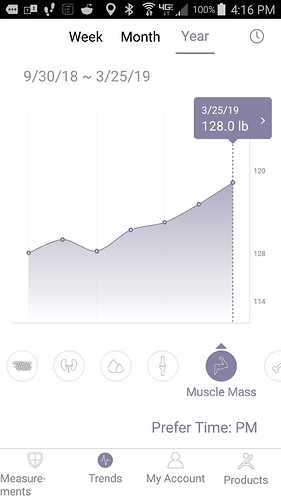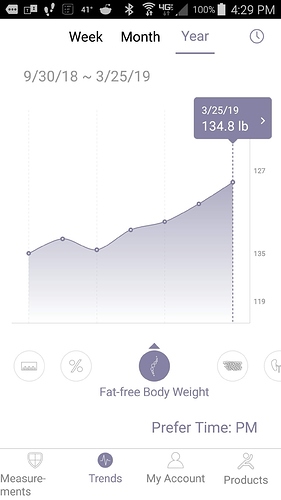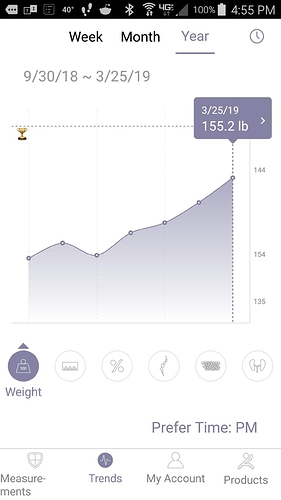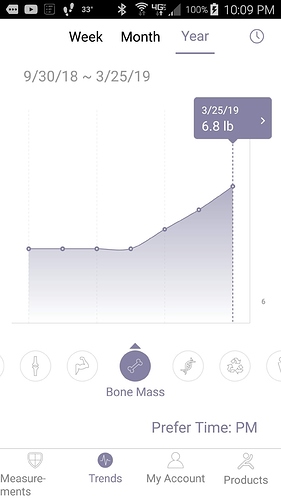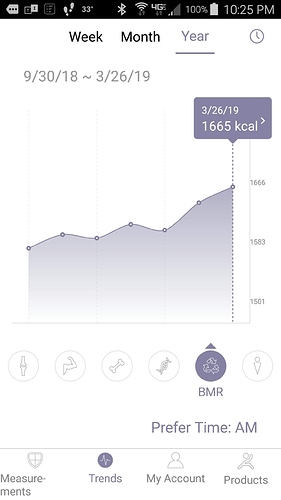I got a bio impedance smart scale on Amazon last September (Renpho). One of my goals for resistance training was to gain a pound a month for 24 months. Last fall I got concerned it wasn’t happening. Over training is the usual reason so I reduced my 3 times a week workouts from 3 sets of 10 exercises to one set of 10 exercises. Session time went from 60 minutes to 20 minutes. I hated it but it worked. I have high confidence because of 6 months of bio impedance data.
This first screen shot from the Renpho app is muscle mass. The first data point is September 30th. Each point is the end of one month. I went to single sets at the beginning of December, the third dot. That’s when progress accelerates. The graph starts at 120 pounds of muscle mass. Over 6 months increases to 128 pounds. That is just a bit better than a pound a month, right where I want to be.
The chart below is fat free body weight covering the same 6 months as above. The change 126.2 to 134.8, a change of 8.6 pounds
Finally overall body weight, 143 pounds on 9/30 to 155.2 pounds on 3/25, a change of 12.2 pounds. So may be a pound of muscle is costing me half a pound off fat. The trade of is not so bad because I started zero carb on the first of March and hideously over eating.
The above gives me more confidence to continue a one set approach. Before making this post I researched other smart scales besides Renpho and couldn’t find a reason to recommend some other one. If some one knows more about smart scales than me and has personal experience with a better one please chime in. I’m ready to invest in a better smart scale if such a thing exists.
P.S. A few more points.
The Renpho scale estimates my bone mass increased from 6.4 to 6.8 pounds, a few ounces. It’s interesting that the improvement didn’t start until after I reduced sets to one per exercise so may be my bones weren’t recovering either. A few ounces might not seem like much but when you’re 70 years old it’s nice to see that number go up instead of down.
Another interesting trend Renpho estimates is my BMR, sedentary calories per day. As with the other positive trends it was creeping up at best until I reduced the volume of lifting.

